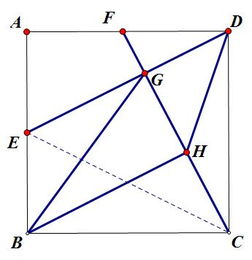Python包将两个热图合二为一(将每个正方形分成两个三角形)角形、两个、正方形、二为
I've been searching around but couldn't find an easy solution to plot two heatmaps in one graphic by having each square in the heatmap split into two triangles (similar to the attached graphic I saw in a paper). Does anybody know a Python package that is able to do this? I tried seaborn but I don't think it has an easy way to achieve this.

Thank you for your time!
-Peter
解决方案plt.tripcolor colors a mesh of triangles similar to how plt.pcolormesh colors a rectangular mesh. Also similar to pcolormesh, care has to be taken that there is one row and one column of vertices less than there are triangles. Furthermore, the arrays need to be made 1D (np.ravel). All this renumbering to 1D can be a bit tricky.
As an example, the code below creates a coloring depending on x*y mod 10 and uses two different colormaps for the upper and the lower triangles.
import numpy as np
import matplotlib.pyplot as plt
from matplotlib.tri import Triangulation
M = 30
N = 20
x = np.arange(M + 1)
y = np.arange(N + 1)
xs, ys = np.meshgrid(x, y)
zs = (xs * ys) % 10
zs = zs[:-1, :-1].ravel()
triangles1 = [(i + j*(M+1), i+1 + j*(M+1), i + (j+1)*(M+1)) for j in range(N) for i in range(M)]
triangles2 = [(i+1 + j*(M+1), i+1 + (j+1)*(M+1), i + (j+1)*(M+1)) for j in range(N) for i in range(M)]
triang1 = Triangulation(xs.ravel(), ys.ravel(), triangles1)
triang2 = Triangulation(xs.ravel(), ys.ravel(), triangles2)
img1 = plt.tripcolor(triang1, zs, cmap=plt.get_cmap('inferno', 10), vmax=10)
img2 = plt.tripcolor(triang2, zs, cmap=plt.get_cmap('viridis', 10), vmax=10)
plt.colorbar(img2, ticks=range(10), pad=-0.05)
plt.colorbar(img1, ticks=range(10))
plt.xlim(x[0], x[-1])
plt.ylim(y[0], y[-1])
plt.xticks(x, rotation=90)
plt.yticks(y)
plt.show()
PS: to have the integer ticks nicely in the center of the cells (instead of at their borders), following changes would be needed:
triang1 = Triangulation(xs.ravel()-0.5, ys.ravel()-0.5, triangles1)
triang2 = Triangulation(xs.ravel()-0.5, ys.ravel()-0.5, triangles2)
# ...
plt.xlim(x[0]-0.5, x[-1]-0.5)
plt.ylim(y[0]-0.5, y[-1]-0.5)
plt.xticks(x[:-1], rotation=90)
plt.yticks(y[:-1])









